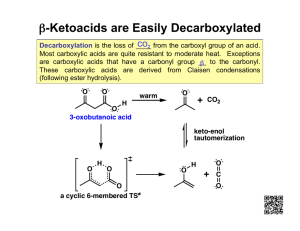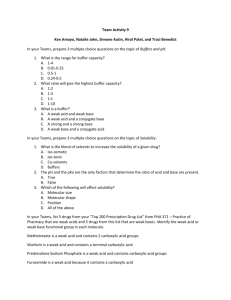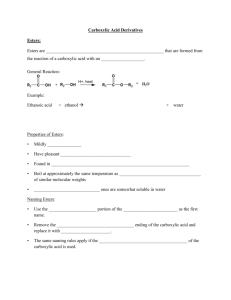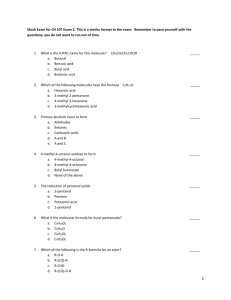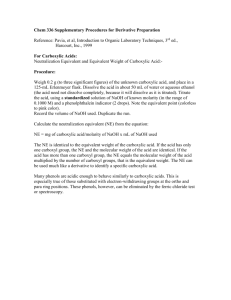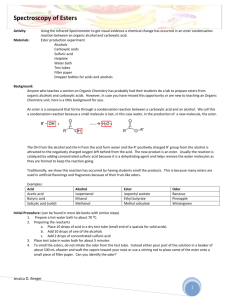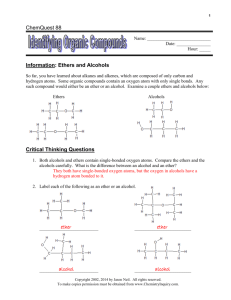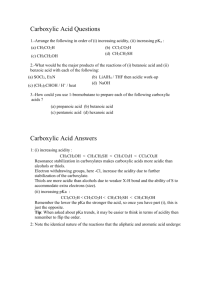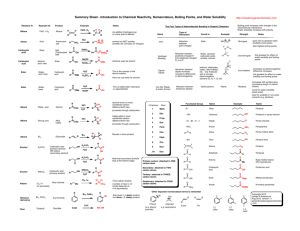4.4 Formation of Esters from Carboxylic Acids and Alcohols
advertisement
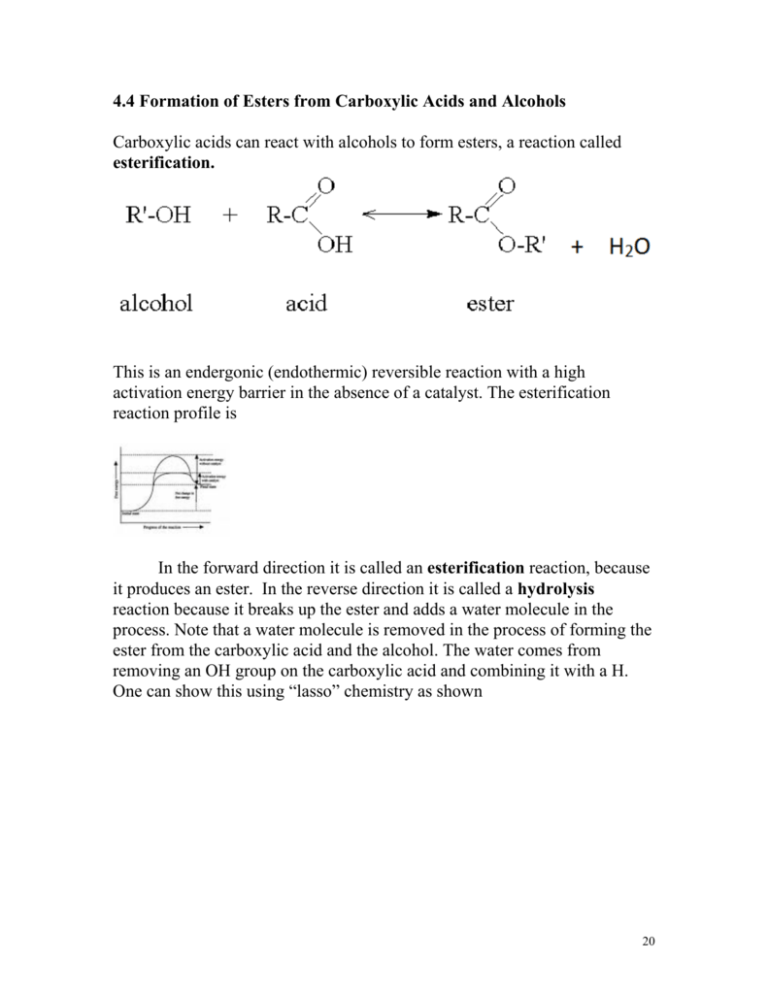
4.4 Formation of Esters from Carboxylic Acids and Alcohols Carboxylic acids can react with alcohols to form esters, a reaction called esterification. This is an endergonic (endothermic) reversible reaction with a high activation energy barrier in the absence of a catalyst. The esterification reaction profile is In the forward direction it is called an esterification reaction, because it produces an ester. In the reverse direction it is called a hydrolysis reaction because it breaks up the ester and adds a water molecule in the process. Note that a water molecule is removed in the process of forming the ester from the carboxylic acid and the alcohol. The water comes from removing an OH group on the carboxylic acid and combining it with a H. One can show this using “lasso” chemistry as shown 20 + H2O (One might wonder how the ester gets formed in the first place, given that it is uphill from the carboxylic acid and alcohol molecules. In fact in biological systems the carboxylic acids are not the reactive molecule itself. The carboxylic acid is activated (energy level raised) by attaching a group which raises its energy level. It is this activated carboxylic acid which reacts with the alcohol and due to the high energy of the activated carboxylic acid, this reaction is exergonic. Once formed the ester often has an activation energy barrier that is high enough that hydrolysis will not occur unless a specific esterase enzyme is present.) Draw the products of the following reactions + HOCH3 ___________ > + H 21 ___ + + H+____> HOCH2CH3 Para aminobenzoic acid + ethanol __ H+___________ ____ > > benzocaine(product) Benzocaine is commonly used as a topical ester local anesthetic to reduce the pain of sunburn and to temporarily reduce dental pain. Creative commons: r Kelly Sue DeConnick kaboodle.com senses.typepad.com Note that the benzene ring has both an alcohol and a carboxylic acid functional group in the next four problems. Which group on the benzene ring will react in each of the above examples? Remember that you need an alcohol and a carboxylic acid in order to form an ester! 22 + HOCH3 __H+____ + > __H+____ > + HOCH3 ____> H+____> + If there are two carboxylic acid functional groups in the molecule, it can react with 2 alcohol molecules and form a diester. + 2 HOCH2CH3 +2 HOCH3 (ortho) phthalic acid ____ > ____________ + 2 H2O > + 2 H2O 23 ____ + 2 > Phthalic acid 2-ethylhexanol What is DEHP used for? + 2 H2O DEHP Practice problems + 2 HOCH3 + 2 HOCH2CH3 ____ > _____ > Lactones Ester groups within rings are called lactones. A lactone is made by forming an ester group from a carboxylic acid and alcohol on the same molecule, forming a ring in the process. 24 ___ H+ _____ > > + H2O We’ve seen the above reactant molecule before, gamma hydroxybutyric acid (GHB). It is a sedative that was readily available in health food stores until 2000 when it was made illegal (schedule I) due to increasingly widespread abuse, particularly as a “date rape” drug. It is easily synthesized and is commonly made in “kitchen labs”. GHB can be made into the GHB lactone form shown above. It may be sold as a paint stripper “solvent” without any claims of pharmacological properties (wink, wink!). In the body the ester is hydrolyzed by an enzyme back into gamma hydroxybutyric acid. Additional sample problems of lactone formation _ H+_____ > __H+ ___ > Will the above lactones be stable? Why or why not? Form lactones from the following molecules. a) __H+_____ > 25 b) ______H ________ + > Why won’t the last product be stable? Answers: a) b) 4-membered ring will have bond angle strain. Spironolactone(Aldactone) is a potassium sparing diuretic which is also used for treating congestive heart failure and off-label (not officially approved by FDA) to reduce excessive hair growth. Circle the lactone ring. What other functional groups are in spironolactone? 26 4.5 NAMING OF ESTERS Esters are named on the basis of the alcohol and the carboxylic acid from which they are formed. The naming system is a little complex , but once you’ve got the idea, it is straightforward. 1) Identify the portion of the ester that came from the carboxylic acid, and that which came from an alcohol. 2) Take the name of the IONIC form of the carboxylic acid. 3) In front of that, put the name of the alkyl group which came from the alcohol. These rules are best illustrated with examples: Answers: 27
